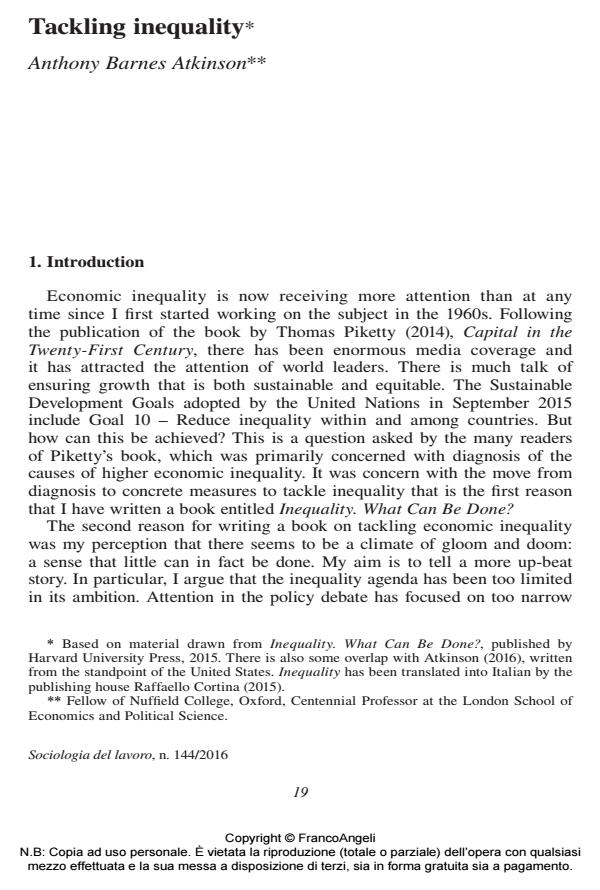Tackling inequality
Journal title SOCIOLOGIA DEL LAVORO
Author/s Anthony Barnes Atkinson
Publishing Year 2016 Issue 2016/144
Language English Pages 11 P. 19-29 File size 93 KB
DOI 10.3280/SL2016-144002
DOI is like a bar code for intellectual property: to have more infomation
click here
Below, you can see the article first page
If you want to buy this article in PDF format, you can do it, following the instructions to buy download credits

FrancoAngeli is member of Publishers International Linking Association, Inc (PILA), a not-for-profit association which run the CrossRef service enabling links to and from online scholarly content.
Economic inequality is high on the political agenda, being held responsible for the rise of protest movements and for rejection of the political status quo. Yet we lack concrete proposals for reducing inequality. There is widespread gloom that little can be done. In this article, I put forward a set of measures for tackling inequality. If we want to reduce inequality, then there are steps that can be taken. They are not necessarily easy and they have costs. We would have to discard economic and political orthodoxies. If our leaders are serious about tackling inequality, then they have to move outside their comfort zone and to consider a wider agenda. The proposals need to be tailored to the context of each country, but are based on an analysis of the common causes of higher inequality, including the role of technology and robotisation, how the labour market is changing so that we can no longer focus on "jobs", and the shifting relation between the ownership of wealth and the control of capital.
Keywords: Economic inequality, role of technology, capital control
Anthony Barnes Atkinson, Tackling inequality in "SOCIOLOGIA DEL LAVORO " 144/2016, pp 19-29, DOI: 10.3280/SL2016-144002